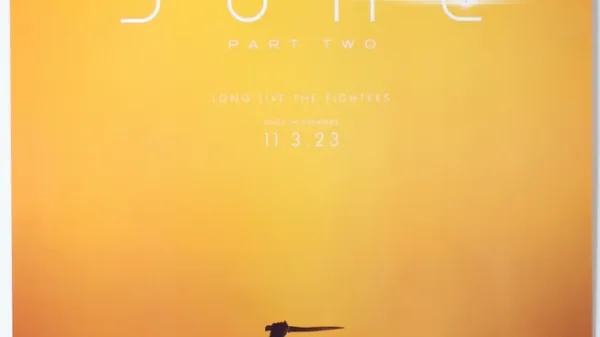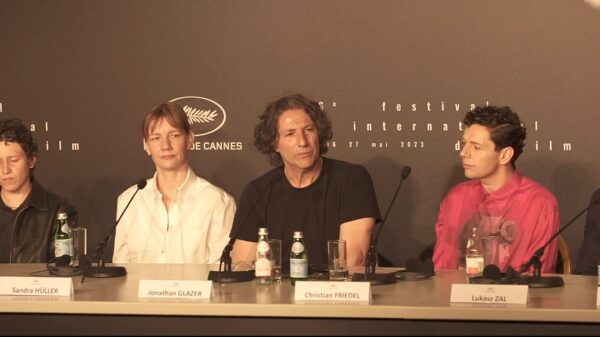Staff writer Isabelle Hickman uses the recent biopics “Blonde” and “Elvis” to compare the onscreen representation of female icons to that of their male counterparts.
TW: Addiction, Alcoholism, Abortion.
The popularity of celebrity biopics has grown enormously over the last couple of years. We want to be closer to our stars and understand what happened behind the scenes of that film, song, relationship, or scandal. We want to understand them on a deeper, more personal level, to be a part of their successes and see our flaws and anxieties reflected in them.
Marilyn Monroe and Elvis Presley are two icons that bookend the golden age of Hollywood. Both names evoke the glamour of Hollywood stardom and the darkness lying deep beneath it. Their significance equally extends beyond their work catalogues, Stacey Henley rightfully stated in her comparison of the two movies that Elvis and Marilyn are “more famous for their existence…you will not meet a single person on the street who has not heard of them”. More famous in death, they have exceeded to new heights of pop-culture significance, forever cemented in our cultural zeitgeist. Considering this, it comes as no surprise that both were subjects of biopics this year. Marilyn Monroe is depicted in “Blonde” directed by Andrew Dominik, and Elvis Presley in “Elvis”, directed by Baz Luhrmann. Both icons have equally troubled beginnings, turbulent middles and sudden and shocking ends. However, these two icons of Americana couldn’t be portrayed more differently, begging the question: how do we portray female celebrities in movies?
Luhrmann, known for his garish, gaudy and heavily stylised way of directing, portrays Elvis sympathetically, a controlled show-pony who just wanted to break free; in a recent interview, Luhrmann commented that Elvis was and remains “the ultimate victim of the hysteria around him”. Through this impression of Elvis as a victim, Luhrmann creates a superhero-like image for Elvis – a hero of his own story, who tried to rival his manager Colonel Tom Parker, “The Snowman”, but ultimately failed. Luhrmann crafts a romantic and idyllic image of Presley’s childhood, portraying him running around with a cardboard lightning bolt around his neck in Mississippi poverty before metamorphosing into the beloved bejewelled icon who championed the American Dream. If Elvis is presented as the superhero, then Marilyn is the doll.
Dominik’s style of film-craft couldn’t be more different from Luhrmann’s. Shot mostly in black-and-white, with emotionally intense close-ups and nauseating shaky-cam used to add a sense of chaos to her life, “Blonde” does not create a superhero image for Marilyn. Dominik’s style reflects his portrayal of Marilyn. In an interview with Sight and Sound, Dominik flippantly remarked that he is “not concerned with being tasteful… ‘Blonde’ is supposed to leave you shaking… It’s a howl of pain or rage”. Relentless in its portrayal of the real-life trauma that Marilyn experienced, Ana de Armas spends what feels like 165 minutes of the film’s 166-minute run-time intensely staring down a camera lens, pitifully crying. It is exploitative, voyeuristic and repetitive to the point of painful (and quite boring) to watch. For a movie that centres so much on love, “Blonde” is a loveless portrayal of an icon whose sheer influence and presence that continues to define Hollywood.
Luhrmann, on the other hand, adores Elvis, attributing his filmmaking style to watching Elvis’s “cheesy movies which [he] thought were works of genius” as a child. Luhrmann overemphasises the good that Elvis did or tried so desperately to achieve if he hadn’t been controlled; in particular, choosing to emphasise a civil-rights narrative to Presley’s career throughout the movie, typified in the pivotal moment during his 68 Comeback Special singing “If I Can Dream”. The movie selectively glosses over his darker chapters: his relationship with his “cherries”, Priscilla’s age, his puffy and drug addled days, and the infamous circumstances of his death, which have been altogether removed, leaving Elvis with a sense of dignity in the final acts of the film. In comparison, Marilyn’s death is turned into a 10-minute-long naked dream sequence, wrapped in a white bed sheet, and her final moment is going towards her “daddy” in the sky. It’s perverse and humiliating at best.
Although “Elvis” touches on his personal life, the film, according to Luhrmann, is about Elvis’s career as a “rock and roll star and movie star” in an era of profound social change in the US. “Blonde” deliberately denies the greatness of Marilyn’s career and solely focuses on her social life, her emotions and her demons. Perhaps this difference in subject matter is a reflection of real life gendered inequalities in the media, where we seem far more interested in the social lives and scandals of our female celebrities rather than their work, compared to their male counterparts. “Blonde” shuns Marilyn’s role in fighting for equality pre-civil rights, and how she used her power and notoriety to convince clubs to allow Ella Fitzgerald to sing during segregation. It ignores that she was also the second woman in US history to own a production company, and glosses over her wit, intelligence and talent displayed in “Some like it Hot” and “Gentlemen Prefer Blondes”, or “well-dressed whores”, as Dominik described the 1953 musical comedy classic, focusing on her supposed dissociation from the character of “Marilyn Monroe”, turning the whole thing into some kind of “Jekyll and Hyde” episodic meltdown.
The film graphically revels in her trauma, according to Henley reducing “her greatest movies to B-movie schlock”, her meaningful actions to illicit relationships, graphic sex and abortions (which there is no evidence she ever had) and her character to a hysterical, infantile diva with daddy issues. Marilyn is portrayed with no strength or voice. The real Marilyn Monroe possessed intelligence, drive and tenacity, perhaps even more so than Elvis, to leave behind her impoverished past and make something of herself despite her traumas, in an era that was highly unforgiving of women. Jill Layton writing for “Hello Giggles” highlights that Marilyn truly broke the mould and challenged the authoritarian structure of Hollywood studios; she wasn’t submissive, lying on a shagpile rug, to Hollywood like Dominik symbolically fetishises her to be.
You may wonder what really is the problem with the obtuse difference in these portrayals and say “well, its artistic license”, “two different directors with unique points of view and styles of film craft”. But when does arguing “artistic license” become a cop-out for actually recognising the problematic nature of what is being displayed? There is considerate danger in portraying our female icons as “damsels in distress” and upholding their male counterparts as heroes. I’m not suggesting an uneven feminist revisioning of history in our biopics. There is equal danger in overplaying greatness; real and fictional characters should be portrayed as three-dimensional. However, as sociologist Fahad Alzahrani explains, “representations of gender in the media influence how people perceive gender issues”, depicting men as the stronger sex and women as weak. It is estimated that 77% of the subjects of biopics are men; therefore, with such little representation of women, the importance of how we represent women and tell their stories grows tenfold. We live in a celebrity-driven world where we replicate and imitate what we are shown. Therefore, these stereotypes resonate even deeper within society when projected through our beloved icons and Hollywood elite, replicating and perpetuating cycles of inequality in our world.
“Blonde” didn’t do Marilyn Monroe the justice that she deserved. Alongside the recent controversy of Kim Kardashian (perhaps the subject of her own biopic in the future) wearing the infamous “Happy Birthday” dress to the 2022 Met Gala, there have been calls to finally let Marilyn rest. The likelihood of this happening is slim, as we remain obsessed with her stardom and overtaken by the mystery surrounding her. As for Elvis, attention is shifting from the “King of Rock and Roll” to Priscilla in the latest biopic, based on Priscilla’s 1985 memoir “Elvis and Me”. Under the guise of Sofia Coppola and A24, there is hope that this biopic will portray Priscilla as three-dimensional – or will this be another exploitative, tear-filled, loveless jaunt into the past of yet another female icon?

















